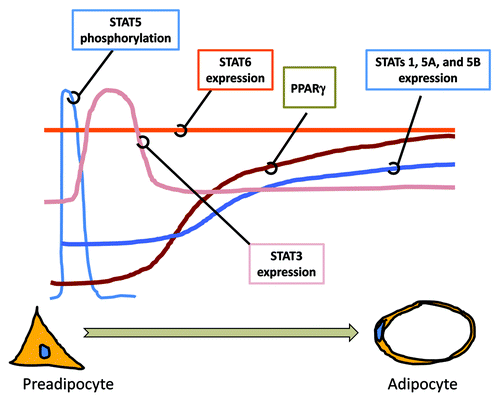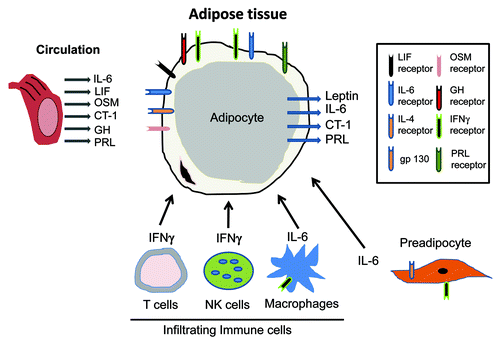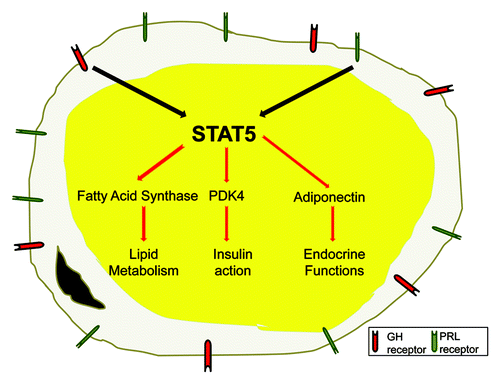Figures & data
Figure 1. The expression and activation of STATs during adipocyte differentiation. Many studies have examined the expression and activation of STATs during the development of adipocytes from preadipocytes. As shown above, STAT5 proteins are tyrosine phosphorylated at the initiation of adipocyte differentiation. This activation precedes the increase in expression of STATs 1, 3, 5A and 5B, which is observed. STAT3 expression is increased during clonal expansion. The induction of the transcription factor PPARγ, a necessary factor for adipocyte development, precedes the increased expression of STATs, 1, 5A and 5B. The expression of STAT6 does not change during adipocyte development. Although the expression of several STATs is changed during adipocyte development, only STAT5 proteins have been shown to play a critical role in adipocyte development in vitro and in vivo.

Table 1. STAT activators in adipocytes
Figure 2. Adipocytes are central players in responding to and producing STAT activating hormones. Adipose tissue is largely comprised of adipocytes but also contains preadipocytes and infiltrating immune cells, including NK cells, T cells and macrophages. Adipocytes are highly responsive to many hormones and growth factors that utilize the JAK-STAT pathway. The receptors for these ligands are indicated in the diagram. Infiltrating immune cells also produce cytokines that act in a paracrine fashion to activated STAT signaling in adipocytes. Adipocytes also have important endocrine properties and four JAK-STAT activating hormones have been shown to be produced from adipocytes.

Figure 3. Growth hormone and prolactin induce STAT5 to modulate key genes associated with adipocyte function. To date, only growth hormone (GH) and prolactin (PRL) have been shown to be physiological activators of STATs 5A and B in adipocytes. Adipocytes have several key functions that include lipid accumulation, carbohydrate and lipid metabolism, insulin sensitivity and endocrine functions. Recent studies have shown that STAT5 proteins can directly modulate the transcription of genes that contribute to all of these critical fat cell functions.
